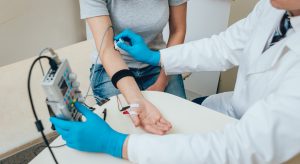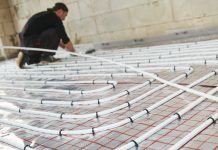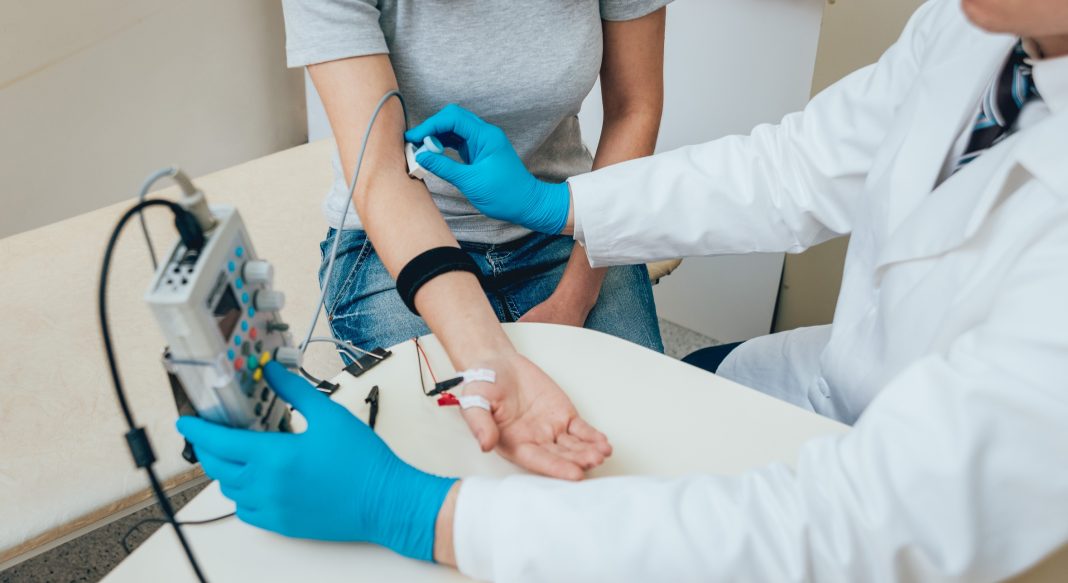From carpel tunnel syndrome to amyotrophic lateral sclerosis (ALS) (also called Lou Gehrig’s disease), a wide range of peripheral nervous system disorders afflict millions of people each day in the United States.

Recently, Sedro-Woolley’s PeaceHealth United General Medical Center added electromyography (EMG) and nerve conduction testing to its services to accurately and quickly diagnose these and other kinds of neurologic conditions. EMG testing looks at the electrical signals the muscles make when they are at rest and in use. A nerve conduction study measures how fast and how well the body’s electrical signals travel down the nerve pathway. Both are used to determine if a patient has a disorder of the nerves, muscles or both.
Combined, these tests can help neurologists render a better picture of what’s wrong with a patient and help make a proper diagnosis. Jeffrey Schachter, MD, a neurologist at PeaceHealth United General, says patients were previously sent to PeaceHealth St. Joseph Medical Center in Bellingham to receive this kind of testing. But now, they can get it much closer to home.
“We like to see it as an extension of our physical exam,” says Schachter of the testing procedures. “We have to take it in context with what we see on our exam and what the patient is telling us. These tests give us more detailed information than we can get with just our hands and our eyes alone.”
Who’s a Candidate for Testing?
Generally, a person with continued weakness, numbness or loss of function in a limb (and possibly accompanied by pain) will receive these tests, says Schachter. As is the case with many medical specialties, a patient’s primary physician may refer them to a neurologist who would order and complete the testing.
It’s important to note that these tests are generally not for those with acute issues, Schachter says. Sudden onset of one-sided numbness or weakness is a sign of stroke and should be dealt with immediately by calling 9-1-1 and going to an emergency room.
How Does It Work?
For nerve conduction testing, a patient will enter the testing room and lie on a bed next to the testing machine. Blankets are usually placed on the limb being tested to keep it warm.
Electrodes are then applied with tape onto the patient’s hands or feet in areas along the nerve pathway. The testing practitioner will use an electric probe attached to the machine to induce electrical stimulation or shocks. When the electrical stimulus excites a nerve, it will travel the length of the nerve fiber to the muscle. The machine records how fast and strong the response to the signal is, and if anything is delaying or blocking that signal.
Schachter says the intensity of the shocks vary but are almost always well-tolerated by patients.

“Some of the shocks are smaller, in which case patients may only barely feel them,” he says. “Some shocks will make the limb jump involuntarily. A lot of patients describe it as a strange sensation rather than painful. Most patients tolerate the tests really well, and we’re careful with how we do it. We use the minimum amount of power necessary to get the response we need.”
With EMG testing, a very small needle is inserted within the limb’s muscle. The needle functions like a microphone inside the muscle, Schachter explains. By listening to the muscle’s electrical signal the practitioner can determine whether the patient’s issues stem from abnormal muscle irritability, or from the nerves themselves.
The testing usually takes about 30 minutes per limb, but Schachter says patients should prepare for the exam to take about one hour from start to finish.
What are the Benefits?
These tests allow practitioners to examine results in real-time, Schachter explains. This means explanation of the results can be given to a patient very quickly.
“Usually – about 90-95 percent of the time – we’re able to tell the patient what we found that day, and then we send a comprehensive report to their referring provider within a couple of days. Many times a patient will present with hand weakness or finger numbness, and one of the questions we ask is, ‘Could this be carpel tunnel syndrome?’ Often times with testing we’ll be able to say ‘yes’ or ‘no’ by the end of that appointment.”
Only in very complex cases does a diagnosis take time beyond that, says Schachter.
Conditions diagnosed with support from EMG and nerve conduction tests range from those disorders that originate in the motor neuron cells of the spinal cord to those in the smaller nerves of the fingertips. Among these are ALS, myasthenia gravis, spinal stenosis, muscular dystrophy, pinched nerves in the back or neck, nerve compression, neuropathy from existing health conditions like diabetes and other neuromuscular and inflammatory muscle disorders.
All in all, Schachter says PeaceHealth United General’s ability to offer this testing is a testament to their commitment to improve and expand healthcare access for local residents. “Being able to offer this locally, I think, gives faster care and quicker answers,” he says. “Overall, it will help to streamline the care of our patients.”
Sponsored




































